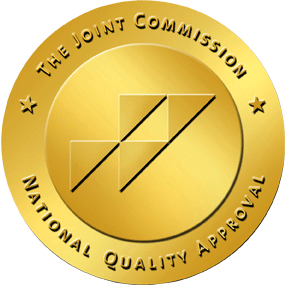Kratom is an unusual and somewhat enigmatic substance that’s relatively new to western societies while having quite a long history among certain indigenous ones. From what we’ve learned about kratom, this drug could become the opioid addiction epidemic to follow heroin, which is why it’s important for us to learn more about this substance. In particular, we should learn what kratom is, its effects, where it comes from, and what makes it such a dangerous substance.
What is Kratom?
For those who may not be familiar with the relatively new trend in substance abuse, kratom—also known as Mitragyna speciosa—is a tropical, evergreen tree that’s in the same floral family as coffee. Native to Southeast Asia, particularly Indochina and Malaysia and the surrounding areas, kratom has a rather controversial history of being used for medicinal purposes. In areas to which it’s indigenous, kratom leaves are chewed fresh, but elsewhere its leaves are most often found in dried form. As for its use, kratom was, until recently, considered benign and has been known to provide pain relief as well as causing mood alteration; however, more recently the use of kratom as a recreational intoxicant has become increasingly common.
Somewhat unexpectedly, kratom actually acts on the opioid receptors in the brain in a manner that’s similar to opioids, but its use cannot be detected by any standard drug screens, which is why kratom is increasingly problematic. In practice, this means that substance abusers could be using kratom unknowingly while participating in methadone maintenance programs or receiving prescription opioids from physicians. Fortunately, we now know that kratom’s metabolites can be detected, but it requires specialized tests.
Kratom in the Media
Per the statements made by the Drug Enforcement Administration (DEA), kratom offers no medicinal or therapeutic benefit. In fact, until very recently, kratom had been largely overlooked in terms of both its potential medicinal uses and its potential as a substance of recreational abuse. However, as scores of people began learning about kratom over the internet, ordering the obscure substance online became possible, allowing individuals to experiment with its effects.
With kratom binding to the opioid receptors in the brain, there’s no denying that the drug offers some level of pain relief in the same vein as one of the numerous opioids with which most people are familiar. For this reason, a number of individuals struggling with opioid addiction —particular those who are addicted to heroin or fentanyl—have begun to experiment with kratom as a replacement for opioids.
Why Kratom is so Dangerous
When you account for many of the reports on the internet, kratom has been used medicinally to treat depression, anxiety, and ADHD; as a substitute for opiate painkillers to treat chronic pain; and as a methadone substitute for individuals struggling with opioid addiction. Additionally, the adverse effects are numerous, ranging from dizziness, nausea, and vomiting to convulsions, hallucinations, and psychosis.
With the accumulation of information regarding users’ experiences with kratom, there are a number of concerns that are becoming apparent.
One thing about kratom that’s extremely concerning is the fact that it can produce both stimulating and sedative effects. It seems that when kratom is taken in advised amounts—according to the dosage information on the bottles, which comes from the companies producing and offering kratom—its effects are those of a stimulant: Users have reported feeling an increase in energy that’s comparable to drinking a large amount of a caffeinated beverage. Additionally, it’s been reported that there’s an increase in focus and concentration. However, there are descriptions of a “drugged” feeling that’s actually been unpleasant.
On the other hand, taking a dose that’s exponentially higher than what’s advised is how the drug produces its contradictory sedative effects. Often consumed as a tea, users have reported these effects as feeling similar to, albeit weaker than, heroin and opiate painkillers. However, kratom is reported to be exceptionally addictive with a number of individuals struggling with opioid addiction attempting to switch to kratom since it’s not illegal and actually carries no risk of overdose. The most current reports indicate that any instances of overdose or death among kratom users are confirmed to have involved other drugs in addition to kratom.
Overcoming Kratom Addiction at Pura Vida Recovery Services
Although it’s been a relatively obscure substance until recently, kratom is quickly becoming popular among communities of substance abusers, particularly those who abuse opioid drugs. This means that we could potentially see kratom addiction become more widespread, which is why Pura Vida Recovery Services offers recovery programming for kratom addiction. The treatment we offer can guide individuals addicted to kratom through our continuum of care, which provides detoxification and withdrawal management, residential care, partial hospitalization, and intensive outpatient treatment. By completion of the program, patients will have acquired the tools necessary to sustain their sobriety; meanwhile, we will continue to be a recovery resource by inviting patients to participate in our alumni and aftercare programs.
If you would like to learn more about kratom addiction treatment at Pura Vida Recovery Services, or for answers to any other questions you may have, please call us anytime at 707.879.8432 or email us at [email protected].




